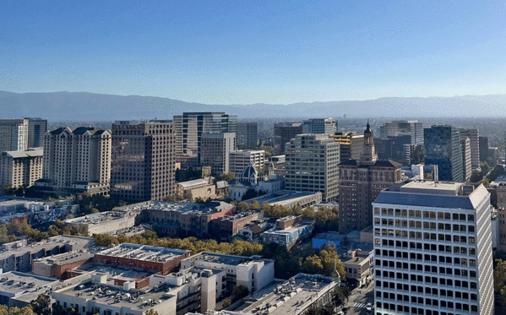Office vacancy levels soar to record highs in biggest Bay Area markets
Published in Home and Consumer News
SAN JOSE, California — The Bay Area’s three primary office markets, haunted by empty buildings, have reached forbidding new milestones of record-high vacancy levels, according to a grim new report.
Silicon Valley, which roughly equates to Santa Clara County; downtown Oakland; and San Francisco all hit record-high office vacancy rates in the most recent three-month period, JLL, a commercial real estate firm, reported in separate surveys of those markets.
Tenants continue to seek ways to reduce their corporate footprints, a dynamic that is keeping office vacancies at brutal levels.
JLL measured the vacancy levels for the July-through-September period.
Here are the details for each market in the third quarter:
— San Francisco, which is locked in what numerous experts believe is an economic “doom loop”, posted a third-quarter vacancy rate of 34.5%.
— Downtown Oakland’s office vacancy rate was 29.1%.
— Silicon Valley reported an office vacancy level of 22%.
In all three instances, the vacancy levels rocketed to record highs, according to JLL researchers for each market.
Despite the ominous statistics, JLL researchers believe some signs of hope have begun to emerge for the battered Bay Area office markets.
“Leasing activity in Silicon Valley is up 21.6% from the previous quarter,” JLL reported in their assessment of the South Bay office market for the third quarter. “The San Jose Airport and Santa Clara submarkets led the activity, accounting for 22.7% and 18.2% of deals, respectively.”
In downtown Oakland, the July-through-September quarter was bleak with little room for optimism. Downtown Oakland’s office market was sluggish at best.
Leasing activity, the number of rental deals and the average lease size declined in the July-September period compared with the April-through-June quarter in downtown Oakland.
Downtown Oakland also faces an ominous challenge due to huge blocks of office space being vacant.
“Two more full floors came to the market this quarter” in downtown Oakland, JLL reported. “Clorox listed another floor for sublease at 1221 Broadway and APEN’s former space at 426 17th Street was listed. This brings the total number of full floors available to 133 in downtown Oakland.”
Put another way, if a typical Oakland office highrise is 20 stories high, 133 empty floors could equate to six or seven completely vacant office towers in downtown Oakland.
San Francisco is — by far — the worst of the three office markets, with a vacancy rate that is 5 to 12 percentage points higher than downtown Oakland or Silicon Valley.
“Vacancy increased to 34.5%” in San Francisco, “largely due to continued consolidation” by office tenants in the city’s Financial District, JLL reported.
Even worse, office rental rates are particularly weak in San Francisco. Rents are roughly 33% below the levels seen in 2019, the final full year before coronavirus-spawned business shutdowns began in 2020.
The JLL report did offer some hope for these three key office markets — although the reports warned that any real improvement in vacancy levels won’t materialize until sometime in 2025.
“Return-to-office rates have trended upward, 6% higher than this time last year” in San Francisco, JLL reported. “Remote job postings are also down 16% year-over-year. Both indicate that companies are shifting away from a remote-friendly work environment.”
Some encouraging signs for downtown Oakland have emerged due to government entities seeking to rent or own office spaces in the East Bay city’s urban core.
“Downtown Oakland has seen stabilization among its public sector tenants, including major commitments from BART PD, the FBI, and FEMA,” JLL reported. “As remote work mandates shift, so will workweek activity shift in downtown Oakland.”
Silicon Valley is starting to see a big increase in tenant demand as companies scout for office space to a greater extent, JLL reported.
“JLL is tracking approximately three million square feet of office requirements, a 21.4% increase” in the third quarter compared with the second quarter, JLL reported.
Plus, more tenants scouted for much larger spaces in the July-through-September third quarter than they did in the April-through-June second quarter.
“While smaller requirements see higher demand and activity, 100,000-plus square feet requirements have tripled this year, signaling potential new deals,” JLL stated.
©#YR@ MediaNews Group, Inc. Visit at mercurynews.com. Distributed by Tribune Content Agency, LLC.








Comments